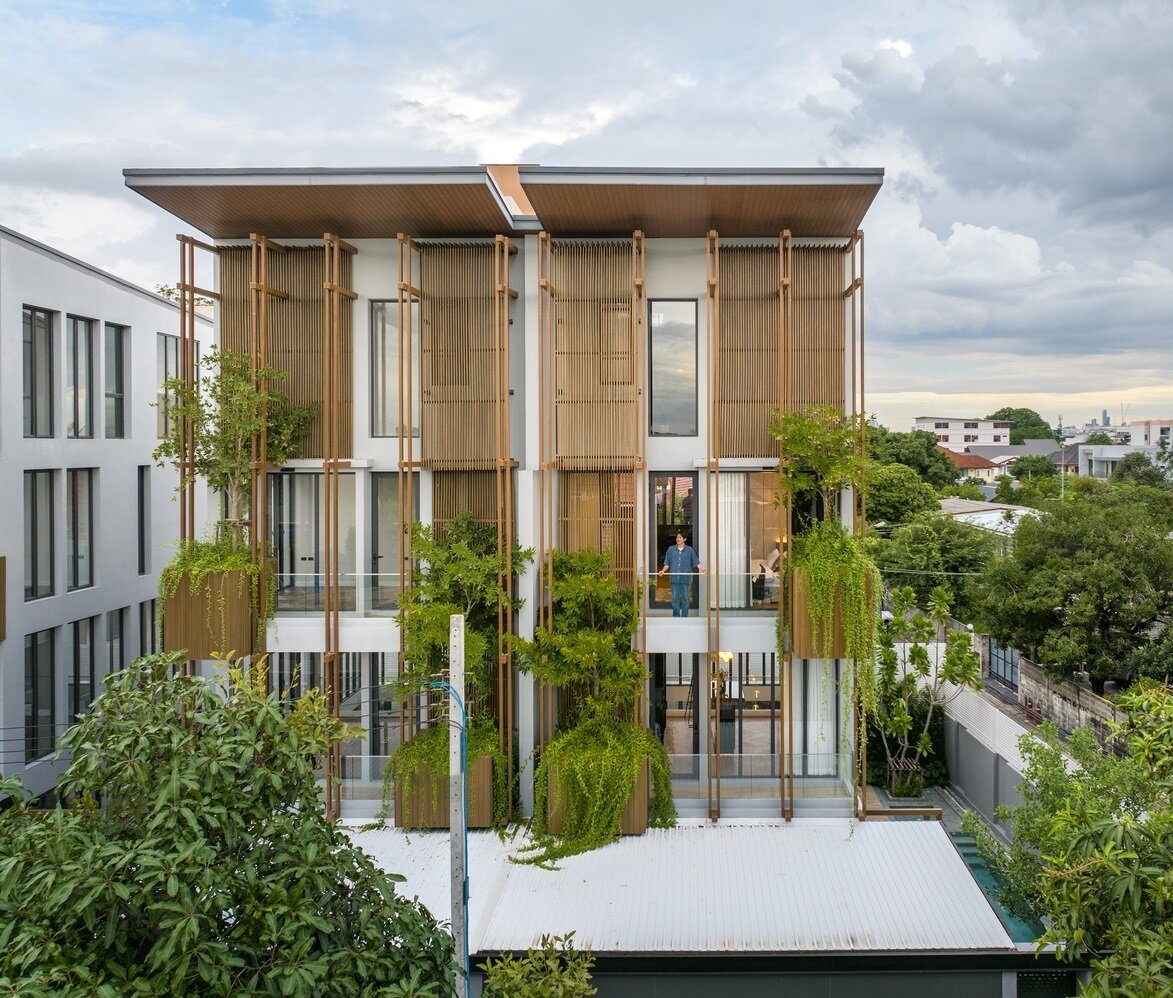#16762. Biophilic Façade with Vertical Greenery and Wooden Louvers

This modern residential building is an excellent example of the integration of nature and architecture. The façade demonstrates a thoughtful balance between structural elements and greenery, creating a sense of harmonious coexistence with the surrounding environment. The composition is based on a vertical system of wooden louvers that serve not only a decorative function but also provide support for climbing plants.
The wooden verticals form a screening grid that gives the building rhythm and creates a play of light and shadow on the white wall surfaces. The façade is divided into distinct geometric sections, giving it a contemporary, structured appearance. Meanwhile, the abundant vegetation softens the rigid architectural lines, adding organic qualities to the overall look.
Particularly noteworthy is the façade design that takes seasonal changes into account — during summer, the vegetation creates natural shading, functioning as a bioclimatic protection, while in winter it allows more light into the interior spaces. Large panoramic windows and glass doors ensure visual permeability and interaction between interior and exterior spaces.
For those planning to incorporate similar techniques in their own home design, it's worth paying attention to the combination of natural materials (wood, concrete, glass), the integration of vertical greenery, and the creation of transitional spaces between interior and exterior. This approach not only creates an aesthetically pleasing façade but also enhances the building's energy efficiency by providing natural cooling during hot periods.